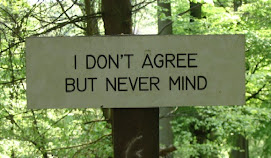AlistairL has posted asking about the differences between UK & US training.
Well, the first thing to say is that both 'sides' find the other fascinating when they get the chance to experience it!
A history lesson:
In 1992 I was ablt to attend an 'MRC' (Motorcycle RiderCourse - the MSF's [that's Motorcycle Safety Foundation] 'learner' course), through the USAF at a UK airbase, RAF Bentwaters (now closed), possible through the great help of Master Sgt Garth Leonard (now retired). In fact, I acted as a 'real' trainee on an instructor preparation course.
Shortly after, I was able to attend an ERC (Experienced RiderCourse) at Garth's 'home' base RAF Upper Heyford (now closed). At that same course there were several other UK instructors from the BMF Rider Training Schme, some of whom doubted that the UK's 'Roadcraft' could be bettered. That day changed attitudes!
Subseqyently, approx. 75 UK riders, from the BMF-RTS, motorcycle trade, and the IAM, attended ERC courses, first at Heyford, subsequently at RAF Fairford.
In 1994 I was 'sponsored' by Heyford to attend an instructor prep course at RAF Molesworth.
In 1997 my involvement ended, as the base commander at Fairford decided he didn't want any UK riders on the base - and that included MSF instructors. Since the only two MSF instructors available were me (a UK civvie) and another guy who was ex-USAF, but retired and a UK civvie, that ended MSF training.
I was briefly contacted later by someone trying to set up a range (the MSF training area) but was unable to contact him after.
Differences
There are so many differences between 'their' training (and I know more about the MSF as it was then than now) and 'ours'. Also, the 'motorcop'/'Pro' techniques are police-based, and I had no involvement with them. The US police have, as far as I know, no direct equivalent to 'Roadcraft', and indivdual forces may be free to implement their own training regimes, unlike our network of police driving schools.
The MSF training is heavily 'regimented' (nothing to do with it being USAF); courses are almost 'scripted', lessons are set length of time, certain points must be covered.
The bad part of that is lack of flexibility in the training which allows no leeway for slower learners, except one-off remedial sessions. Instructors don't have the same flexibility that the UK's have - it's a total contrast to, for example, a CBT courtse where the move to the next module is only made when the trainee's ability justifies it.
However . . . because it's so prescriptive it ensures the entire syllabus, to the required standard, is completed. 'Production line' it may be - but you gain the benefits of a 'standard product'.
In a way, it equates to the IAM system (little S) here; they're getting you to test level, you will ride as we show you. And where that 'fails' is with 'non-standard' riders, where one size doesn't fit all.
Similarly, perhaps, the MSF allows no extra flair from the instructor - they really do have to do it 'by the book' - and trust me, those books are big'n'heavy! Lesson plans for the theory session include exact timings, points that must be covered, slides or videos to show, and allow little room for the instructor's personality.
ALL MSF training is either theory or off-road, on the 'range', a hard-surface area roughly (ie 'from memory') 120ft x 220ft. Exercises use a plethora of cones - painting the coloured dots is a two-day job!
On the learner course (MRC), there are 'core skills' covered: starting, stopping, braking, turning, and 'advanced' skills, such as 'swerving'. All road riding (corners, junctions, lane-changes) is simulated on the range.
Range safety is of vital importance, to protect the instructors from injury, and from being sued . . . Some of the 'lesson's from that stay in my mind even now, for example never having your back to a bike with it's engine running.
Courses are (were) based heavily on research: the well-known Hurt report, task analysis (look at the actions a rider must take) and photgraphic analysis.
Teaching is educationally-based: lessons have an introduction, 'visual' presentation, 'instructor' presentation, recap, follow-up work. There are indoor 'armchair exercises' covering getting on the bike, gear-changing, cornering . . . Range sessions have a briefin, demo ride with commentary, exercise with coaching, and debrief.
Having seen how well off-road training and testing can be done, it worries me how the DSA are doing the new test. DSA need speed-measuring equipment, MSF give you a stop watch and a time:speed chart. MSF have set marking criteria which parallel training, DSA have . . . well, who knows?
If you'd like more explained, let me know!
.
Wednesday, 10 September 2008
Subscribe to:
Post Comments (Atom)





1 comment:
Cheers for this. In fact although I've read it a couple of times I think I will need to have a think before I come up with questions - well covered :)
Post a Comment